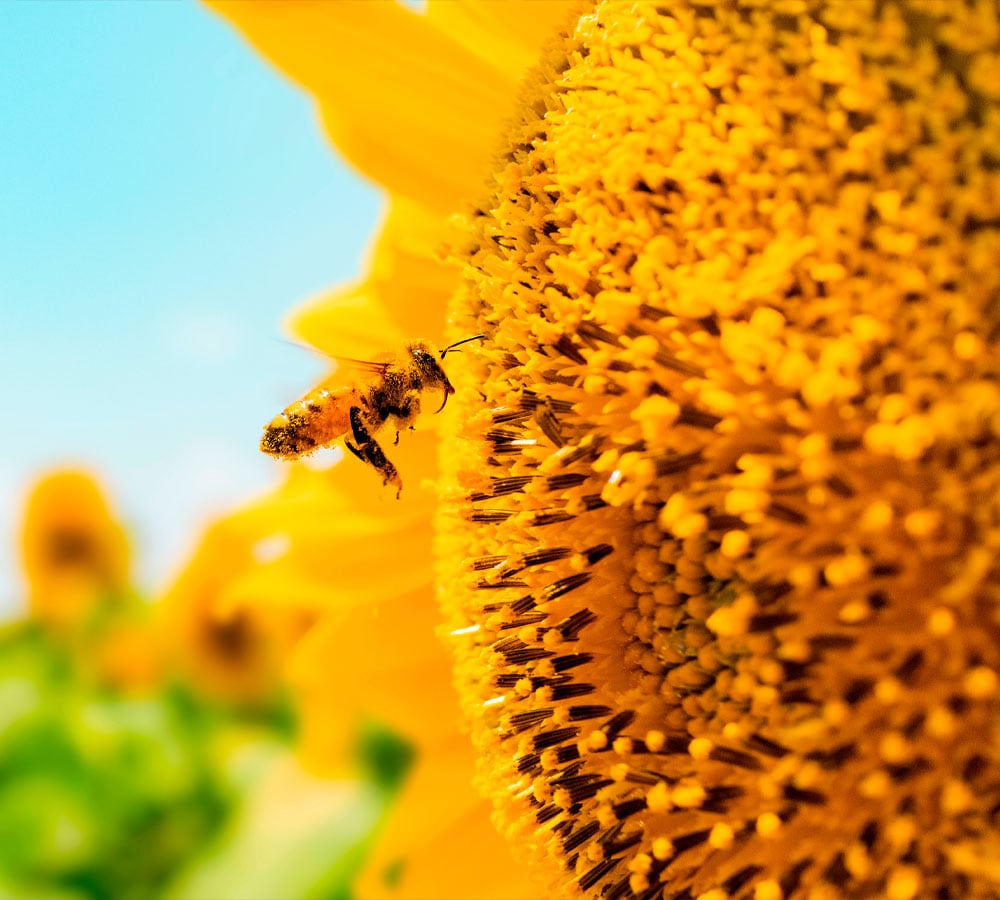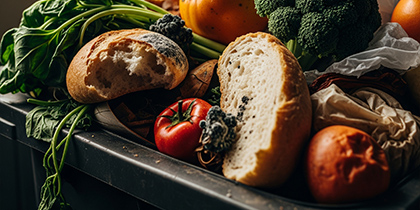A restaurant that buys too liberally and has to throw out fresh ingredients at the end of the week. A load of ready-to-eat meals that can no longer be delivered due to a manufacturing error. Or a container of strawberries that stays in the back of the refrigerator at home until it goes moldy.
Food waste occurs at every link in the chain. But how big is this waste - in the Netherlands, Belgium and worldwide? What is already being done, and what still needs to be done to reduce it? You can read it in this blog.
Food waste: what do the figures say?
Worldwide, an estimated one third of all food produced ends up in the waste bin. That amounts to over 1.05 billion tons per year.
In the Netherlands, about 2 billion kilos of food is wasted annually. That amounts to an average of 100 kilos per person. The estimated economic damage is 2.5 billion per year. This amount comes from costs incurred within the entire process: from purchasing raw materials and energy consumption during production to personnel costs, transportation and the cost of disposing of food as waste.
The figures are also high in Belgium. On average, some 345 kilos of food are wasted per inhabitant per year. In Flanders, the figure is 907,000- tons annually, much of which comes from households and businesses that produce or process food- such as factories, packaging sites and distribution centers.
What is the government doing against food waste?
Food waste is increasingly higher on the policy agenda. Both in the Netherlands, Belgium-and internationally-clear goals have been set to combat waste.
Worldwide: SDG goals for 2030
Internationally, the issue of food waste falls under the Sustainable Development Goals (SDGs) of the United Nations. SDG 12.3 agrees that countries should halve their per capita food waste by 2030. This looks at reducing losses in the production and distribution chain, for example at farmers, processors, supermarkets and food service establishments.
The Netherlands: halving waste by 2030
The Dutch government has translated this international goal into national policy. The ambition: to reduce food waste by 50% in 2030 compared to 2015. Back then, it was estimated that between 1.77 and 2.55 million tons of food was wasted. The most recent measurements show that this is now still around 2 billion kilograms. So the decline is not yet fast enough to reach the goal of no more than 1 million tons by 2030.
Belgium: regional cooperation and awareness
Belgium, like other UN member states, has committed to SDG 12.3. Although the country does not have a central, legally established reduction target focused on food waste, there are several initiatives where companies and municipalities are working together to reduce waste.
One example is Vlaco , which offers support in the smarter processing of fruit and vegetable waste, so that these streams get a second life as compost or raw material. OVAM also runs campaigns with the catering industry, such as Resorestje, to take home leftovers.
Preventing food waste: what initiatives help?
In addition to laws and regulations, there are an increasing number of initiatives that help reduce waste. Three examples are:
Selling leftover food at a discount.
A well-known initiative is Too Good To Go. Through this app, restaurants, supermarkets and bakeries offer their surplus products at a discount at the end of the day. This way, products with a short expiration date still get a destination-and don't end up in the trash.
Take home leftovers
More and more catering establishments also offer a take-home tray as standard if you don't finish your meal. In Flanders, this was even actively promoted under the name Resorestje, a campaign by OVAM and Horeca Vlaanderen- as mentioned earlier.
Donating to food banks
Food banks distribute products that are no longer sold-such as surpluses from supermarkets or producers-but that are still safe to consume-to low-income households.
How do you go from less waste to fully circular?
Many initiatives against food waste focus on saving products at the end of the chain. Valuable, but in doing so we mainly address the symptoms.
What if we worked toward a system in which waste no longer occurs at all? A system in which exactly what is needed is produced. In which by-products are reused instead of thrown away, and in which waste is prevented. This is how we make the move toward a circular economy.
How circular is the food industry?
According to the Circularity Gap Report, the world is currently only 6.9% circular; down from previous years. This is despite a sharp increase in attention to circularity in recent years.
The gap between our current circular performance and the desired economy is growing. This gap-the so-called circularity gap-is currently as high as 93%. One of the biggest-and often underestimated-causes of this low circularity is the food industry.
Staying uptodate
Want to stay up to date on all new developments? Follow us onLinkedIn, listen to the podcast 'Grondstof tot nadenken' or subscribe to the newsletter. Are you curious about what Milgro can do for your business and waste process? Then get in touch.















